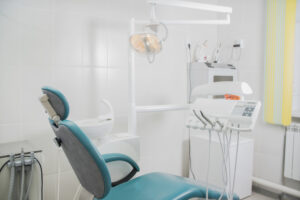By Nicholas Eusanio, Esq., LLM
At Nardone Limited, we believe that proper tax planning begins with adequate recordkeeping. One particular area of tax planning and documentation that results in much confusion for individuals and small businesses is how to deduct expenses for business use of an automobile. As a dentist and possibly a dental practice owner, you should properly deduct and maintain documentation to substantiate business automobile expenses for your practice.
Proper Deduction
Ensuring proper deduction of your automobile expenses is important. Although legitimate business travel, which may encompass driving to and from different offices, may be deductible, commuting to and from your home to your practice is not.
Further, you may deduct expenses for business use of an automobile by using: (i) the standard mileage rate; or (ii) the actual expense method, provided the taxpayer meets strict substantiation requirements showing:
- The amount of each use of the vehicle (i.e., the mileage);
- The time and place of the vehicle use; and
- The business purpose of the vehicle use.
Generally, to satisfy these strict requirements, a taxpayer must maintain:
- An account book, diary, log, statement of expense, trip sheets, or similar record, which records the required elements of expenditures or uses at or near the time of those expenditures or uses; and
- Documentary evidence, such as receipts, paid bills or similar evidence, which, together are sufficient to establish each element of each expenditure or use that must be substantiated.
Understanding Proper Methods for Deducting Automobile Expenses
To utilize the standard mileage deduction method, a taxpayer may multiply the number of business miles driven using a particular vehicle by the Internal Revenue Service’s published standard mileage rate for the tax year. Again, your ability to deduct your dental practice’s business expenses for use of a vehicle requires that you maintain proper documentation, as noted above. But there are a number of important exceptions that can disqualify you from using the standard mileage deduction. For instance—among other exceptions not listed here—you cannot use the standard mileage deduction if you:
- Have claimed a depreciation deduction for the vehicle in question using any method other than the straight-line method; or
- Have expensed the vehicle in question under Internal Revenue Code § 179.00174387.1
If you are unable, or simply elect not to use the standard mileage method, you may use the actual expenses method for deducting business use of a vehicle. Deductible automobile expenses include depreciation, licenses, gas, oil, tolls, lease payments, garage rent, parking fees, registration fees, repairs, tires, and car washes. But, again, the taxpayer must maintain adequate documentation to substantiate the expenses, as explained above.
Finally, one significant point of confusion that arises regarding the business vehicle expense deduction relates to the rules governing availability of the two expense deduction methods: standard mileage rate method, and actual expenses including depreciation method. We have simplified the general rules for determining which automobile expense deduction method is available, as follows:
- A taxpayer can only use one of the above-noted methods for a particular vehicle each year. For example, a taxpayer could elect to take the standard mileage deduction for the Volvo, and the actual expenses with depreciation deduction for the Ford in a given tax year. But, the taxpayer could not use both methods on the same vehicle.
- A taxpayer who wants to use the standard mileage deduction method for a particular vehicle must elect and use that method in the first year that the taxpayer puts the vehicle to business use. Otherwise, the taxpayer may not use the standard mileage deduction for that particular vehicle in later tax years.
- Once a taxpayer has fully depreciated a business vehicle’s value as part of using the actual expenses deduction method, the taxpayer may not thereafter use the standard mileage expense deduction method for the fully depreciated vehicle. In other words, once a taxpayer fully depreciates a business vehicle, the taxpayer must continue to use the actual expenses deduction method for that vehicle.
Ensuring that you are properly deducting automobile expenses may not be as simple as it seems at first glance. If you have any questions about your dental practice or tax planning, including which business vehicle expense deduction method to use and how to properly document your business use of the vehicle to substantiate the deduction, do not hesitate to contact one of our dental practice attorneys.
 Vince Nardone Discusses Employment Contracts with Ohio State Dental Students
Vince Nardone Discusses Employment Contracts with Ohio State Dental Students  Navigating the 2024 Landscape: Strategies and Considerations for Dental Support Organizations (DSOs)
Navigating the 2024 Landscape: Strategies and Considerations for Dental Support Organizations (DSOs)  Sellers of Dental Practices to DSOs need to have a Buyer’s Mentality Requiring Selectivity and a Well-Thought-Out, Decision-Making Process
Sellers of Dental Practices to DSOs need to have a Buyer’s Mentality Requiring Selectivity and a Well-Thought-Out, Decision-Making Process  Increasing Profitability by Minimizing Disruptions within Your Dental Practice
Increasing Profitability by Minimizing Disruptions within Your Dental Practice  As a Dentist, What Are My Obligations Related to Out-of-State Patients and Potential Prescription Drug Abuse?
As a Dentist, What Are My Obligations Related to Out-of-State Patients and Potential Prescription Drug Abuse?